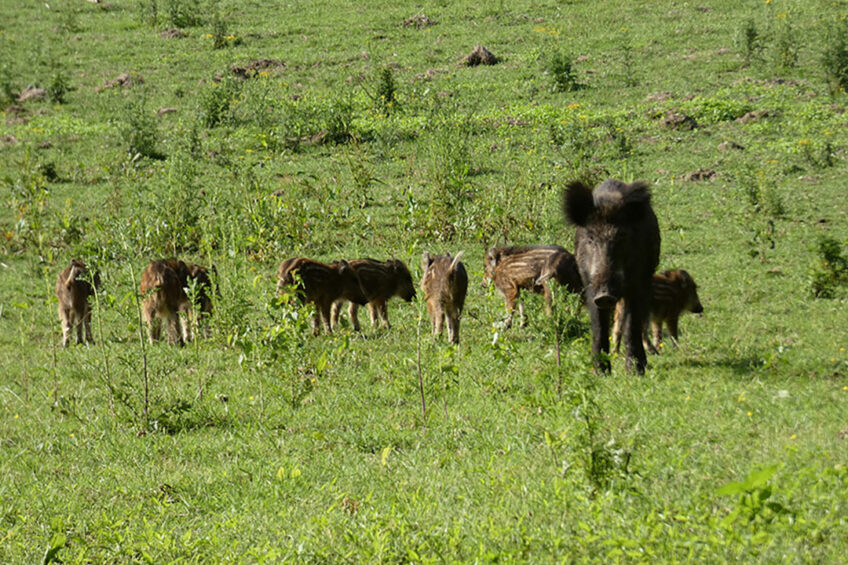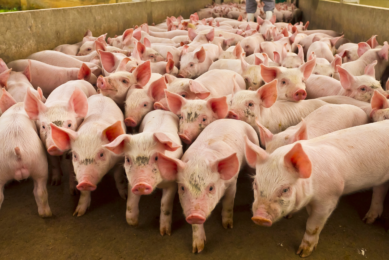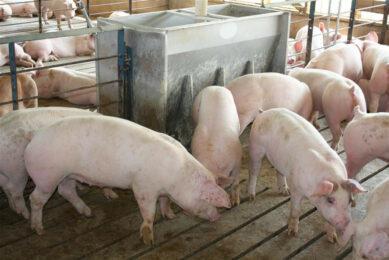Slow progress in reducing wild boar in Canada

Progress in reducing the number of wild boar in Canada has been slow this year. A programme failed in Alberta, and the population size in Manitoba has been determined to be larger than previously thought.
In Alberta, an ill-advised bounty programme was rolled out 5 months ago and has resulted in no kills.
On April 1, the provincial government offered residents rewards for proof of boar kills through 2 pilot programs. Because of the poor result, these programs may not be continued, but will stay in place for now.
One of the programs is to last until April 2023 and offers hunters $ 75 for every pair of ears they turn in. The other program is supposed to last 2 years. In that one, trappers are paid $ 75 per pair of wild pig ears, with the bizarre expectation that they have killed an entire herd.
Expected outcome
Many experts expected the failure of these bounty programmes. They included Dr. Ryan Brook at the University of Saskatchewan. He is the director of the Canadian Wild Pig Research Project and studied wild boar control in Canada for years.
He recently noted to CBC News that hunting does not work for wild boar control and only makes the problem worse as it encourages nocturnal behaviour, evasion and spread.
Hunting in California
In the US, various states such as Texas allow hunting of wild boar. It is a tourism industry in itself and has not helped in wild boar control.
In August in California, the Senate passed a wild boar hunting bill. It waits for the state governor to sign or veto it.
Among other changes, the bill would allow unlimited hunting from hunters inside or outside the state. Hunters need to purchase oa hunting tag, starting in 2024.
New reporting tool for wild boar in Canada
Back in Canada in May, the Manitoba Invasive Swine Eradication Project and Manitoba Pork rolled out a new reporting method for wild pigs. They did this in collaboration with a company called Farm Health Guardian. This company makes an app platform for reporting livestock disease symptoms. It is aimed at preventing production losses and outbreaks and achieving better disease control in pigs, poultry flocks and more.
‘Squeal on Pigs’
Since May, the public can automatically report wild boar sightings in the province through the ‘Squeal on Pigs’ initiative. They can use the free Farm Health Guardian app. The public can also make reports at www.squealonpigsmb.org or use a toll-free number.
The Manitoba Invasive Swine Eradication Project launched ‘Squeal on Pigs’ earlier this year. This is a partnership between the federal government, the province of Manitoba and Manitoba Pork. Its aim is to gain a better understanding of the wild pig population and to concentrate eradication efforts in the right areas.
However, in July, the Coordinator of the Manitoba Invasive Swine Eradication Project reported that the wild pig population in that province is bigger than previously believed.
Large population
Dr. Wayne Lees stated that whilst he and his team knew there were many pigs in the Spruce Woods area of the province, “since we have launched our campaign, we have found reports of sightings much further north and much further east so the scope the geographical impact I think is much broader than what we first anticipated. It’s an issue that I think we probably underestimated to begin with, until we got the word out and people started to report sightings.”
In Saskatchewan, where Canada’s wild pig problem is worst, the public can report sightings of feral pigs by calling or texting a toll-free number or by calling any Saskatchewan Crop Insurance office. This agency follows up on sightings and puts together a removal plan.
Those in Ontario can also report sightings in several ways.











